Hiking is an excellent way to stay fit, explore nature, and unwind from the stresses of daily life. But can it replace leg day? As someone who enjoys hiking and weightlifting, I was curious to know if hiking could be an adequate replacement for leg day. After conducting my research and personal study, I have come to some conclusions.
Firstly, it’s essential to understand what leg day is and how it works for your legs. Leg day is a term used by fitness enthusiasts to describe a workout that focuses on strengthening and toning the muscles in your lower body. This typically involves exercises such as squats, lunges, and deadlifts, which target the glutes, hamstrings, quads, and calves. Leg day is an essential part of any fitness routine, as it helps build lower body strength and endurance.
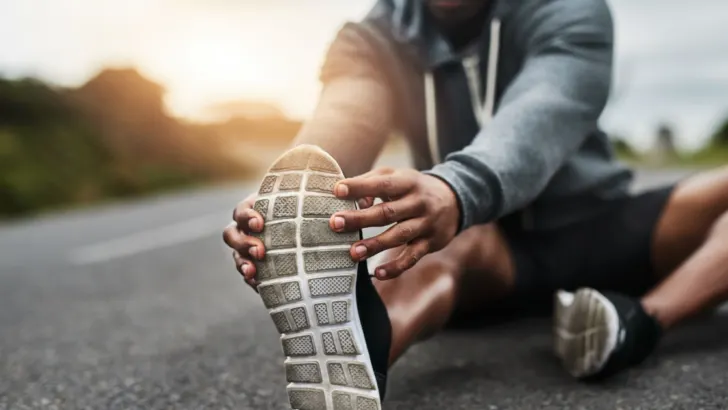
Key Takeaways
- Hiking can be an excellent way to build leg muscle endurance and improve cardiovascular health.
- Hiking alone cannot replace leg day, as leg day exercises target specific muscles that hiking may not engage.
- To get the most out of hiking as a leg workout, focus on challenging trails, take breaks when needed, and supplement with other leg exercises if desired.
Can Hiking Replace Leg Day?
As someone who enjoys hiking, I have often wondered if it can replace leg day at the gym. After researching and considering the benefits and drawbacks, I have come to the conclusion that hiking can provide a great workout for your legs, but it cannot fully replace a leg day at the gym.
Hiking involves walking uphill, downhill, and on uneven terrain, which engages the muscles in your legs, including your quadriceps, hamstrings, calves, and glutes. It is also a great form of cardio, which can help you burn calories and improve your overall fitness.
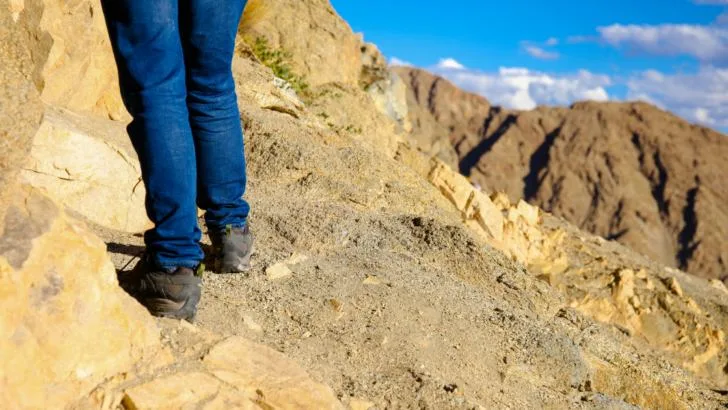
However, hiking does not provide the same level of targeted muscle development as a leg day at the gym. Leg day exercises, such as squats, lunges, and leg presses, allow you to focus on specific muscle groups and increase the intensity of your workout.
Additionally, if your goal is to build muscle mass in your legs, hiking alone may not be enough. To build muscle, you need to progressively overload your muscles with heavier weights, which is difficult to achieve with hiking alone.
In conclusion, while hiking can provide a great workout for your legs and should definitely be a part of your fitness routine, it cannot fully replace a leg day at the gym if your goal is to fully develop your leg muscles.
Related Posts:
What Is Leg Day?
Leg day is a term commonly used in the fitness community to refer to a workout that primarily focuses on strengthening and toning the muscles in the lower body. This includes the thighs, glutes, hamstrings, and calves.
During leg day, exercises such as squats, lunges, deadlifts, leg presses, and calf raises are typically performed. These exercises help to improve muscle strength, endurance, and flexibility in the lower body.
Leg day is an essential part of any well-rounded fitness routine, as it helps to improve overall athletic performance, increase metabolism, and burn calories. It is especially important for individuals who participate in sports that require lower body strength and endurance, such as running, cycling, and hiking.
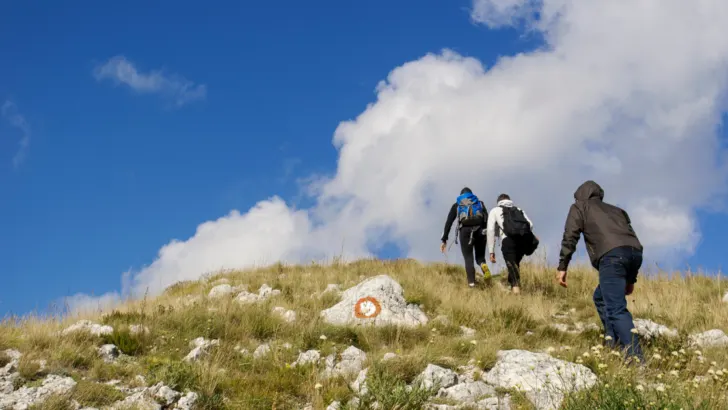
While hiking can provide many of the same benefits as leg day, it is not a complete replacement for a dedicated leg workout. Hiking primarily works the muscles in the lower body that are used for endurance and cardiovascular fitness, rather than muscle strength and hypertrophy. Therefore, if you want to fully develop your leg muscles, it is important to include leg day in your fitness routine.
How Does Hiking Work Your Legs?
Hiking is a great way to work out your legs. It engages your lower body muscles while providing a cardiovascular workout. Let’s take a closer look at how hiking works your legs.
When you hike uphill, your quadriceps, glutes, and calves are activated to push your body up the incline. This helps to build strength and endurance in these muscles. The steeper the incline, the more intense the workout. Hiking downhill works your leg muscles in a different way. Your quads and hamstrings are engaged to control your descent and prevent your knees from taking the full impact of each step. This helps to build endurance and stability in these muscles.

Hiking on uneven terrain also engages your leg muscles. Your ankles and feet work to stabilize your body on rocky or uneven surfaces. This helps to build strength and balance in these muscles, which can reduce the risk of ankle sprains and other injuries.
Overall, hiking is an excellent way to work out your legs. It engages your lower body muscles in a variety of ways, providing a complete lower body workout.
Related Posts:
Can Hiking Replace Leg Day?
As someone who enjoys both hiking and weightlifting, I often wonder if hiking can replace leg day. After researching and considering my personal experience, I’ve come to the conclusion that it depends on your fitness goals.
If your goal is to build muscle mass and strength, then leg day is a must. Weightlifting exercises such as squats, deadlifts, and lunges are effective for targeting specific muscle groups in your legs, and they allow you to progressively increase the weight you lift over time. Hiking, on the other hand, is more effective for building endurance and improving cardiovascular health.
However, if your goal is to improve your overall fitness and maintain a healthy lifestyle, then hiking can be a great alternative to leg day. Hiking is a low-impact exercise that engages multiple muscle groups in your legs, including your quads, hamstrings, calves, and glutes. It also engages your core muscles, which helps to improve your balance and stability.
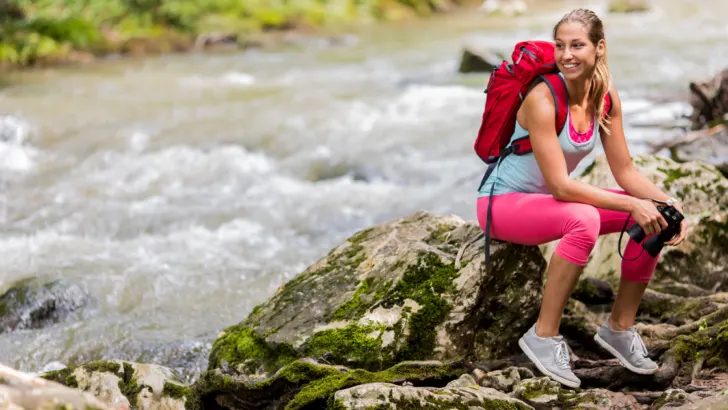
Another benefit of hiking is that it allows you to get outside and enjoy nature. Being outdoors has been shown to have a positive impact on mental health, and it can help to reduce stress and anxiety. Plus, hiking can be a fun and social activity that you can do with friends or family.
In conclusion, whether or not hiking can replace leg day depends on your fitness goals. If you’re looking to build muscle mass and strength, then leg day is a must. However, if you’re looking to improve your overall fitness and enjoy the outdoors, then hiking can be a great alternative to leg day.
My Personal Study and Exercise Plan
As someone who enjoys both hiking and weightlifting, I was curious about whether hiking could replace leg day in my exercise routine. To test this out, I conducted a personal study where I replaced my usual leg day workout with hiking for a period of four weeks.
During this time, I hiked for about 2-3 hours, 2-3 times a week, on trails with varying degrees of incline. I also made sure to track my progress by measuring my leg strength and muscle mass before and after the study.
Overall, I found that while hiking did provide a good workout for my legs, it did not fully replace the benefits of a leg day workout. Here are some of my observations:
- Hiking provided a great cardio workout and helped me burn calories, but it did not give me the same muscle pump and soreness that I would get from a leg day workout.
- I did notice some improvements in my leg strength and endurance, especially when hiking uphill, but I did not see a significant increase in muscle mass.
- I also found that hiking was a great way to switch up my routine and enjoy the outdoors, but it did not provide the same targeted and isolated muscle training that I would get from exercises like squats and deadlifts.

Based on my personal experience, I would recommend incorporating hiking into your exercise routine as a supplement to leg day workouts, rather than a replacement. Hiking can provide great cardiovascular benefits and natural resistance training, but it should not be relied on as the sole method for building leg muscle and strength.
Studies That Have Looked at the Effects of Hiking on Leg Strength and Endurance
I searched for studies that have examined the effects of hiking on leg strength and endurance. Here are some relevant findings:
- A study published in the Journal of Strength and Conditioning Research in 2015 examined the effects of a 10-week hiking program on leg strength and endurance in women. The study found that hiking improved leg strength and endurance, as measured by the 1-repetition maximum (1RM) test and the 30-second Wingate test, respectively. The authors concluded that hiking can be an effective way to improve leg strength and endurance in women.
- Another study published in the Journal of Sports Medicine and Physical Fitness in 2017 compared the effects of hiking and resistance training on leg strength and endurance in older adults. The study found that both hiking and resistance training improved leg strength and endurance, but resistance training was more effective. The authors concluded that hiking can be a useful alternative to traditional resistance training for older adults who cannot or do not want to engage in resistance training.
- A study published in the Journal of Exercise Science and Fitness in 2018 examined the effects of a 12-week hiking program on leg strength and endurance in university students. The study found that hiking improved leg strength and endurance, as measured by the 1RM test and the maximal number of repetitions at 80% of 1RM, respectively. The authors concluded that hiking can be an effective way to improve leg strength and endurance in young adults.
Overall, these studies suggest that hiking can be an effective way to improve leg strength and endurance. However, it is important to note that hiking may not be as effective as traditional resistance training for improving leg strength and endurance, especially in older adults.
Tips for Making Hiking a More Challenging Leg Workout
As someone who enjoys hiking as a form of exercise, I have found that it can be a great way to challenge and strengthen the muscles in my legs. Here are some tips for making hiking a more challenging leg workout:
- Increase the intensity: If you want to make your hikes more challenging, try increasing the intensity. This can be done by hiking on steeper terrain or carrying a heavier backpack. You can also try adding some interval training to your hikes by alternating between periods of fast walking and slower recovery periods.
- Incorporate strength exercises: While hiking is a great way to work your legs, incorporating strength exercises can help take your workout to the next level. Consider doing some squats, lunges, or step-ups before or after your hike to target your leg muscles.
- Focus on form: Proper form is important when hiking to avoid injury and get the most out of your workout. Make sure to engage your core and keep your back straight while hiking uphill. When hiking downhill, take shorter steps and try to land on the balls of your feet to reduce the impact on your knees.
- Mix it up: To keep your workouts interesting and challenging, try mixing up your hiking routes and adding in different types of terrain. You can also try hiking at different times of the day or in different weather conditions to add variety to your workouts.

By following these tips, you can make hiking a more challenging and effective leg workout. Remember to listen to your body and adjust your workout as needed to avoid injury.
Related Posts:
Information About How to Adjust Your Hiking Routine If You Are Also Doing Other Leg Exercises
If you are already doing other leg exercises in your workout routine, you may wonder how to adjust your hiking routine to avoid overtraining your legs. Here are some tips to help you balance your workouts and maximize your leg strength and endurance.
Firstly, it’s important to listen to your body and adjust your hiking routine accordingly. If you feel fatigued or sore from your leg workout, you may want to take a day off from hiking or reduce the intensity or duration of your hike. On the other hand, if you feel fresh and energized, you may want to challenge yourself with a longer or more challenging hike.
Secondly, you can adjust your hiking routine to complement your leg exercises. For example, if you are doing squats, lunges, or leg presses in your workout, you may want to focus more on uphill hiking, which targets your quadriceps and glutes. If you are doing deadlifts, calf raises, or leg curls, you may want to focus more on downhill hiking, which targets your hamstrings and calves.
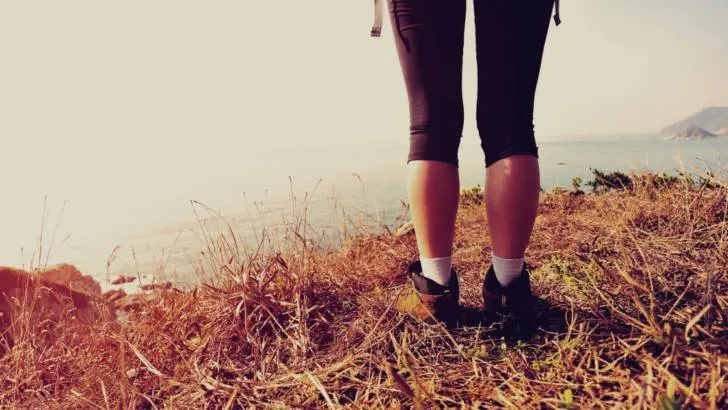
Thirdly, you can vary your hiking routine to target different leg muscles and avoid overuse injuries. For example, you can do short, steep hikes to target your quads and glutes, or long, gradual hikes to target your hamstrings and calves. You can also do interval hikes, where you alternate between uphill and downhill sections, to target all your leg muscles and improve your overall endurance.
Lastly, you can use hiking as a form of active recovery between your leg workouts. Hiking can help improve your blood flow, reduce inflammation, and speed up your recovery time. Just make sure to adjust the intensity and duration of your hike based on your recovery needs and goals.
By following these tips, you can adjust your hiking routine to complement your leg exercises and maximize your leg strength and endurance without overtraining or risking injury.
More Challenging Leg Workout
If you are looking for a more challenging leg workout, hiking can be a great option. Here are some ways to make your hikes more challenging and get a better leg workout:
Hike on Steeper Terrain
One way to increase the intensity of your hike is to find steeper terrain. Hiking uphill will work your quads, hamstrings, and glutes more than hiking on flat ground. Look for trails with a higher elevation gain or try adding some hills to your route.
Hike with a Weighted Backpack
Another way to make your hike more challenging is to add some weight to your backpack. This will increase the resistance on your leg muscles and make them work harder. Start with a light weight and gradually increase as you get stronger.
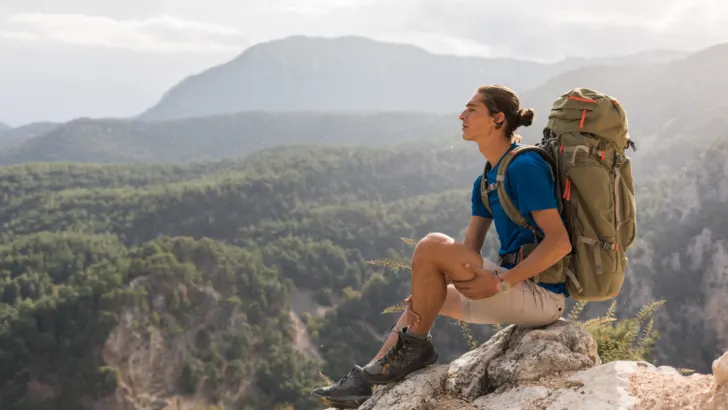
Hike for Longer Distances
Increasing the distance of your hike is another way to challenge your leg muscles. This will not only work your legs but also improve your endurance. Start with a comfortable distance and gradually increase as you get stronger.
Hike Uphill and Downhill
Hiking both uphill and downhill will work different muscles in your legs. Uphill hiking works your quads, hamstrings, and glutes, while downhill hiking works your calves and shins. Try to find a route that includes both uphill and downhill sections to get a full-leg workout.
By incorporating these methods into your hiking routine, you can make your leg workout more challenging and effective. Remember to start slowly and gradually increase the intensity as you get stronger.
If You Are Also Doing Other Leg Exercises, You May Want to Reduce the Amount of Time You Spend Hiking
If you are already doing other leg exercises in your workout routine, you may want to reduce the amount of time you spend hiking. While hiking is an excellent way to strengthen your leg muscles, doing too much of it can lead to overtraining and injury.
Overtraining occurs when you do too much exercise without giving your body enough time to recover. This can lead to muscle soreness, fatigue, and even injury. If you are already doing other leg exercises, such as squats and lunges, you may want to reduce the amount of time you spend hiking to avoid overtraining.
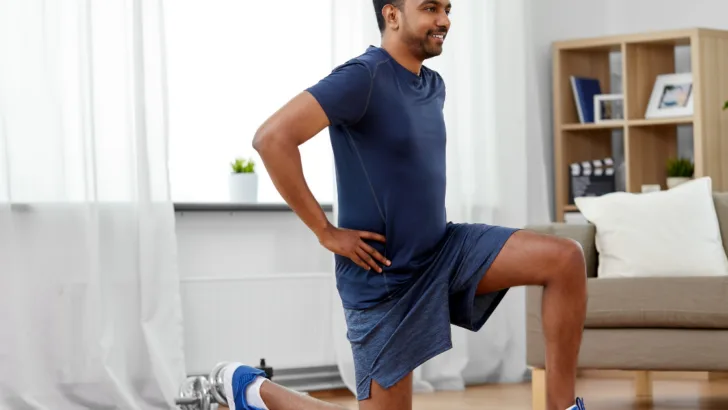
Additionally, if you are doing other leg exercises, you may want to focus on different types of terrain when you go hiking. For example, if you are doing a lot of squats and lunges in your workout routine, you may want to focus on hiking uphill to target your glutes and hamstrings. On the other hand, if you are doing a lot of calf raises and leg curls, you may want to focus on hiking downhill to target your calves and quads.
Overall, hiking can be a great way to strengthen your leg muscles, but it is important to balance it with other leg exercises and to avoid overtraining. By varying the terrain and reducing the amount of time you spend hiking, you can get the most out of your workout routine and avoid injury.
You May Also Want to Focus on Hiking Trails That Are Less Challenging
When it comes to hiking, there are many trails to choose from, ranging from easy to difficult. If you’re looking to replace leg day with hiking, you may want to focus on trails that are less challenging. Here are a few reasons why:
- Reduced risk of injury: Hiking on less challenging trails can reduce the risk of injury, especially if you’re new to hiking or have joint issues. Trails that are too steep or rocky can put a lot of strain on your knees and ankles, increasing the risk of injury.
- Better for building endurance: While challenging trails can be great for building strength, less challenging trails can be better for building endurance. You can still get a good workout by hiking longer distances on easier trails, which can help improve your cardiovascular health and overall fitness.
- More enjoyable: Hiking should be an enjoyable activity, not a chore. If you’re constantly pushing yourself on challenging trails, you may start to dread hiking altogether. By focusing on less challenging trails, you can enjoy the scenery and the experience without feeling like you’re constantly pushing yourself to the limit.

Of course, this doesn’t mean you should avoid challenging trails altogether. It’s important to challenge yourself and push your limits, but it’s also important to listen to your body and know your limits. By focusing on less challenging trails, you can still get a great workout while reducing the risk of injury and enjoying the experience.
It Is Important to Listen to Your Body and Take Breaks When You Need Them
As someone who enjoys hiking, I understand the appeal of pushing yourself to your limits and achieving new goals. However, it is important to remember that your body has its limits and needs time to rest and recover. This is especially true if you are considering replacing leg day with hiking.
While hiking can certainly provide a great workout for your legs, it is not a substitute for targeted strength training. It is important to incorporate a variety of exercises into your fitness routine to ensure that you are working all of your muscle groups and avoiding overuse injuries.
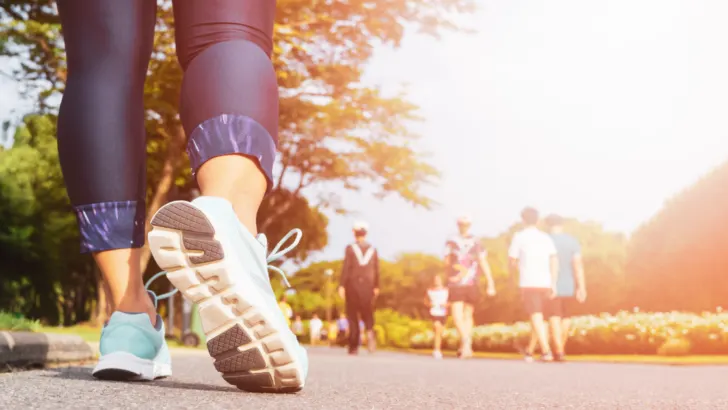
Additionally, it is important to listen to your body and take breaks when you need them. If you are feeling fatigued or experiencing pain during a hike, it is important to slow down or stop and take a break. Ignoring these warning signs can lead to more serious injuries and setbacks in your fitness journey.
Taking breaks can also help improve your mental and physical health. Relaxing activities like meditation, yoga, or simply taking a few moments to sit and enjoy the view can help reduce stress and improve overall well-being. Research has found that taking breaks can improve mood, boost performance, and increase your ability to concentrate and pay attention.
In summary, while hiking can be a great addition to your fitness routine, it is important to remember that it is not a replacement for targeted strength training. It is also important to listen to your body and take breaks when you need them to avoid overuse injuries and improve your overall well-being.
Conclusion
In conclusion, hiking can be a great form of exercise for your legs and can offer many benefits similar to leg day workouts. However, it may not be a complete replacement for leg day, especially if your goal is to fully develop your leg muscles.
Hiking is an excellent form of cardio and can help improve muscular endurance. The repetitive nature of hiking allows your muscles to adapt and become more efficient over time, leading to increased stamina and reduced muscle fatigue during physical activities. Additionally, hiking burns a lot of calories, which can aid in weight loss and toning of the legs.

On the other hand, leg day workouts specifically target the leg muscles and can help build muscle size and strength. Squats, lunges, and deadlifts are all exercises that can help develop the quadriceps, hamstrings, and glutes. These exercises are essential for building strong, toned legs.
Ultimately, the decision to replace leg day with hiking depends on your fitness goals. If you want to improve your overall fitness and endurance, hiking can be an excellent addition to your workout routine. However, if your goal is to build muscle size and strength in your legs, leg-day workouts should not be replaced entirely by hiking. Instead, consider incorporating both hiking and leg day workouts into your routine for maximum benefits.
Frequently Asked Questions
Can hiking provide a good alternative to leg day workouts?
Yes, hiking can provide a great alternative to leg day workouts. Hiking is a great way to build endurance and strengthen your leg muscles. It also offers a range of other benefits, such as improving cardiovascular health and reducing stress.
Is hiking a suitable replacement for leg day exercises?
While hiking can be a great way to work your leg muscles, it may not be a suitable replacement for leg day exercises. Leg day workouts typically involve exercises that target specific muscle groups in your legs, such as squats, lunges, and leg presses. These exercises are designed to build muscle mass and strength, which hiking may not offer to the same extent.
Can hiking be a substitute for traditional leg day routines?
Hiking can be a substitute for traditional leg day routines to some extent. However, it is important to note that hiking may not provide the same level of muscle mass and strength gains as traditional leg day exercises. If your goal is to build muscle mass and strength in your legs, hiking may not be the best option.
What are the benefits of hiking for leg muscles?
Hiking offers a range of benefits for leg muscles, including improved endurance, increased flexibility, and enhanced cardiovascular health. Hiking also engages a range of leg muscles, including the quadriceps, hamstrings, and calves, which can help to strengthen and tone these muscles over time.
Can hiking help build strong legs?
Yes, hiking can help to build strong legs. Hiking engages a range of leg muscles, including the quadriceps, hamstrings, and calves, which can help to strengthen and tone these muscles over time. Hiking also offers a range of other benefits, such as improving cardiovascular health and reducing stress.
Is hiking a viable option for those looking to skip leg day?
While hiking can be a great way to work your leg muscles, it may not be a viable option for those looking to skip leg day altogether. Leg day exercises are specifically designed to build muscle mass and strength in your legs, which hiking may not offer to the same extent. If your goal is to build muscle mass and strength in your legs, it is important to incorporate leg day exercises into your workout routine.
